We put the Honor Magic5 Pro through our rigorous DXOMARK Display test suite to measure its performance across six criteria. In this test results summary, we will break down how it fared in a variety of tests and several common use cases.
Overview
Key display specifications:
- 6.81 inches OLED, (~91.5% screen-to-body ratio)
- Dimensions: 162.9mm x 76.7mm x 8.77 mm
- Resolution: 1312 x 2848 pixels, (~461 ppi density)
- Aspect ratio: 19.5:9
- Refresh rate: 120 Hz
Scoring
Sub-scores and attributes included in the calculations of the global score.
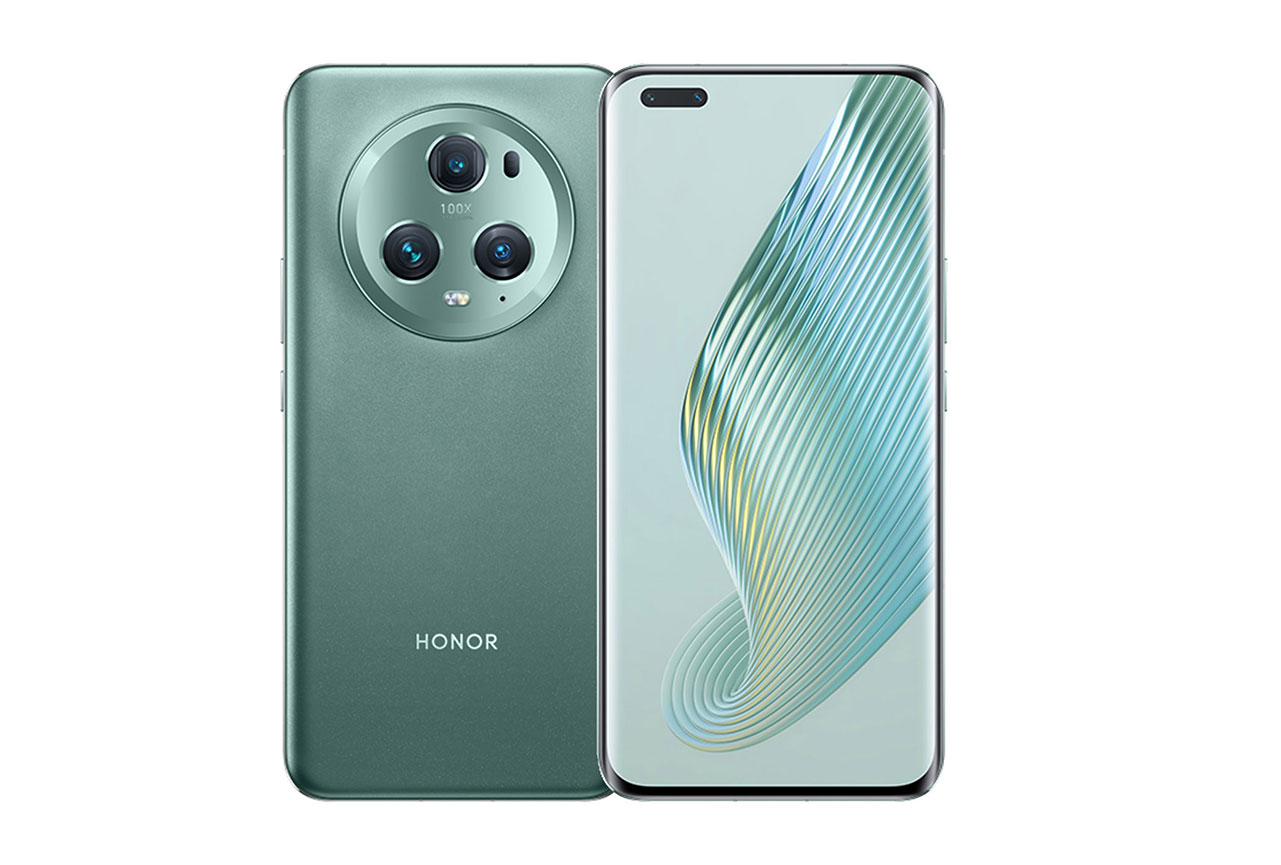 Honor Magic5 Pro
Honor Magic5 Pro


 19th
19th
 14th
14th
Pros
- Good display brightness in every lighting condition
- Good picture rendering in indoor conditions
- Accurate and fast touch reactivity
- Flicker-free
Cons
- High brightness mode (triggered in very bright environments) decreases the contrast in some areas.
- Lack of smoothness when playing video games
- Lack of uniformity in low light
With a score of 151, the Honor Magic5 Pro display has found its way to the top of the DXOMARK ranking thanks to its well-rounded and consistent performance in all the key attributes.
Although the Honor Magic5 Pro did not achieve the highest score in any of the attributes that go into calculating our Display overall score, it came very close in all categories, thereby achieving the kind of well-balanced performance DXOMARK looks for when ranking smartphones — and in this case, the Honor Magic5 Pro’s performance earned it the top spot in our Display database to date.
Taking a closer look at its performance, the new Honor device provided very good readability, with tuning that made it comfortable to see in all tested lighting conditions. The Honor might not have the highest peak brightness as the Apple iPhone 14 Pro Max, but the Magic5 Pro managed its color and contrast better than some of its rivals. Its color was better than that of two of its direct competitors, the Apple iPhone 14 Pro Max and the Samsung Galaxy S23 Ultra; and although it fell behind the Samsung device for video, it nonetheless provided good HDR rendering. The Magic5 Pro’s touch was smooth, reactive, and accurate; and finally, it was flicker-free and ignored ghost touches.
Test summary
About DXOMARK Display tests: For scoring and analysis in our smartphone and other display reviews, DXOMARK engineers perform a variety of objective and perceptual tests under controlled lab and real-life conditions. Note that we evaluate display attributes using only the device’s built-in display hardware and its still image (gallery) and video apps at their default settings. (For in-depth information about how we evaluate smartphone and other displays, check out our articles, “How DXOMARK tests display quality” and “A closer look at DXOMARK Display testing.”
The following section gathers key elements of our exhaustive tests and analyses performed in DXOMARK laboratories. Detailed performance evaluations under the form of reports are available upon request. Do not hesitate to contact us.
Readability
Honor Magic5 Pro
164
Readability evaluates how easily and comfortably users can read still content (photos & web) on the display under different real-life conditions. DXOMARK uses its Display Bench to recreate ambient light conditions ranging from total darkness to bright sunlight. In addition to laboratory tests, perceptual analysis is also made in real-life environments.
In addition to smooth transitions when moving from one ambient light level to another, the Honor Magic5 Pro’s real strength is its well-tuned brightness in every lighting condition. Its weak points are a lack of uniformity in low light; a loss of brightness when viewed on angle; and that even though its high brightness mode (HBM) increases visibility, it does so at the expense of some detail rendering.
In low light, the Magic5 Pro’s tuning for auto brightness provided 8 nits of brightness to the display, compared with the iPhone Pro Max’s 2 nits and the Samsung Galaxy S23 Ultra’s 10 nits.
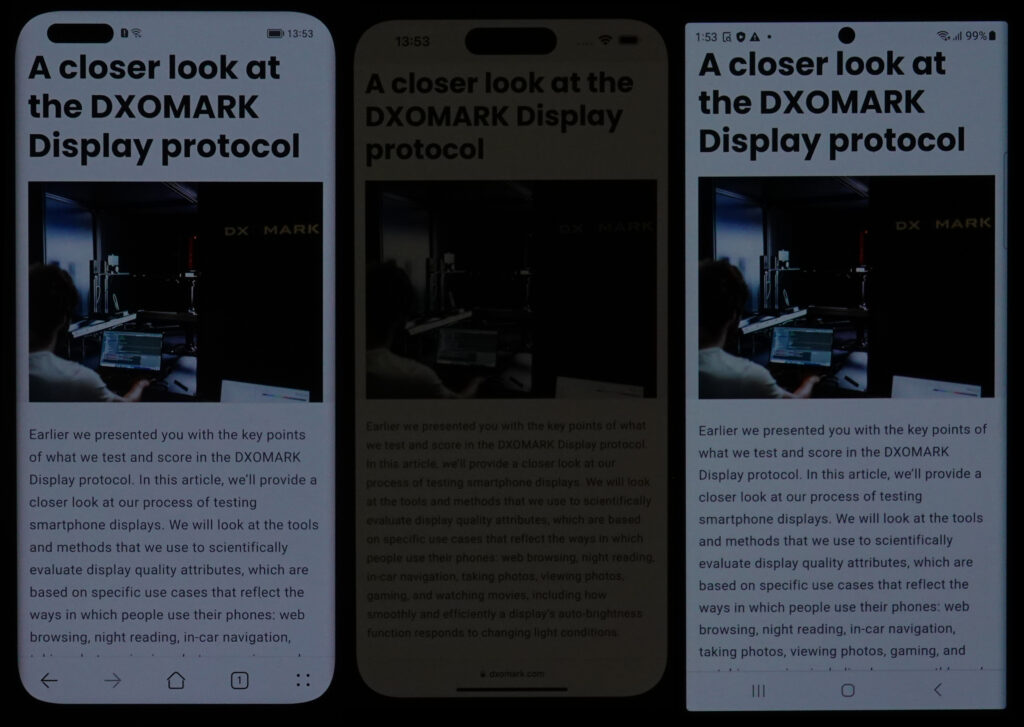

In the comparisons below, the Honor Magic5 Pro provided the most detailed rendering in lighting conditions that were equivalent to home lighting (250 lux).


The normalized uniformity graphs below show that the Magic5 Pro has a slight dark line emanating horizontally from its notch, while the iPhone 14 Pro Max has a wide darker area at the bottom of the screen; the S23 Ultra is very uniform.
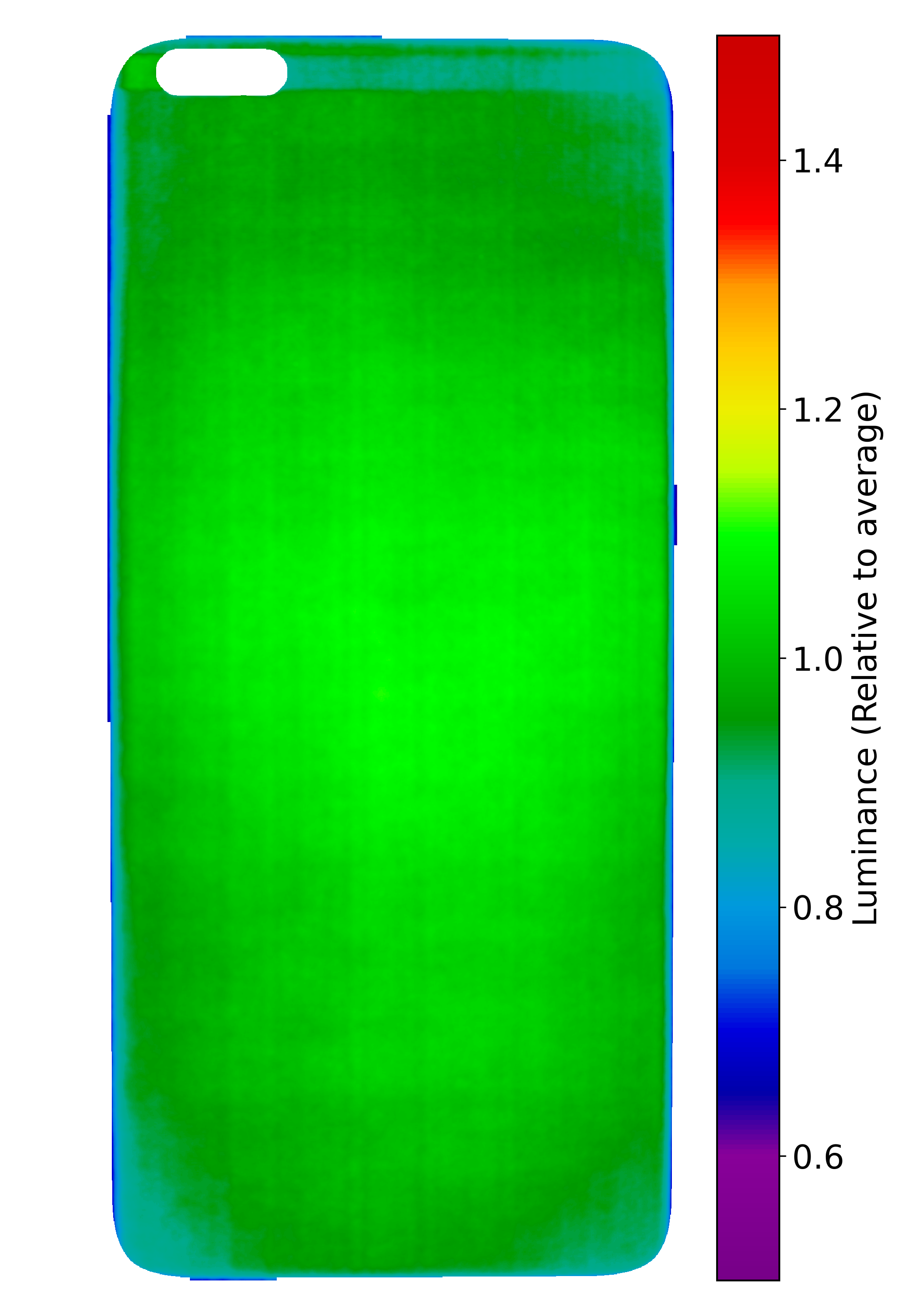
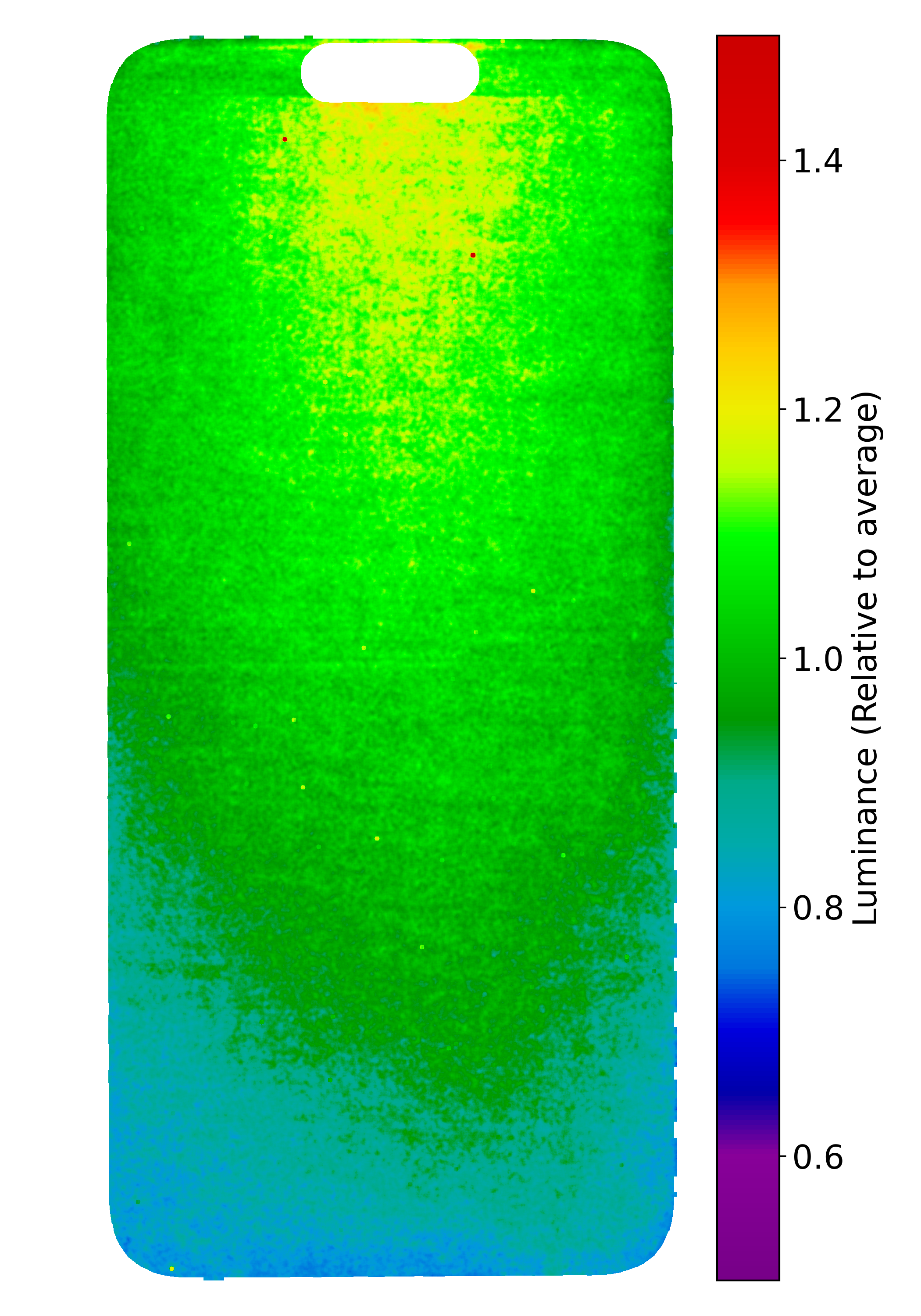
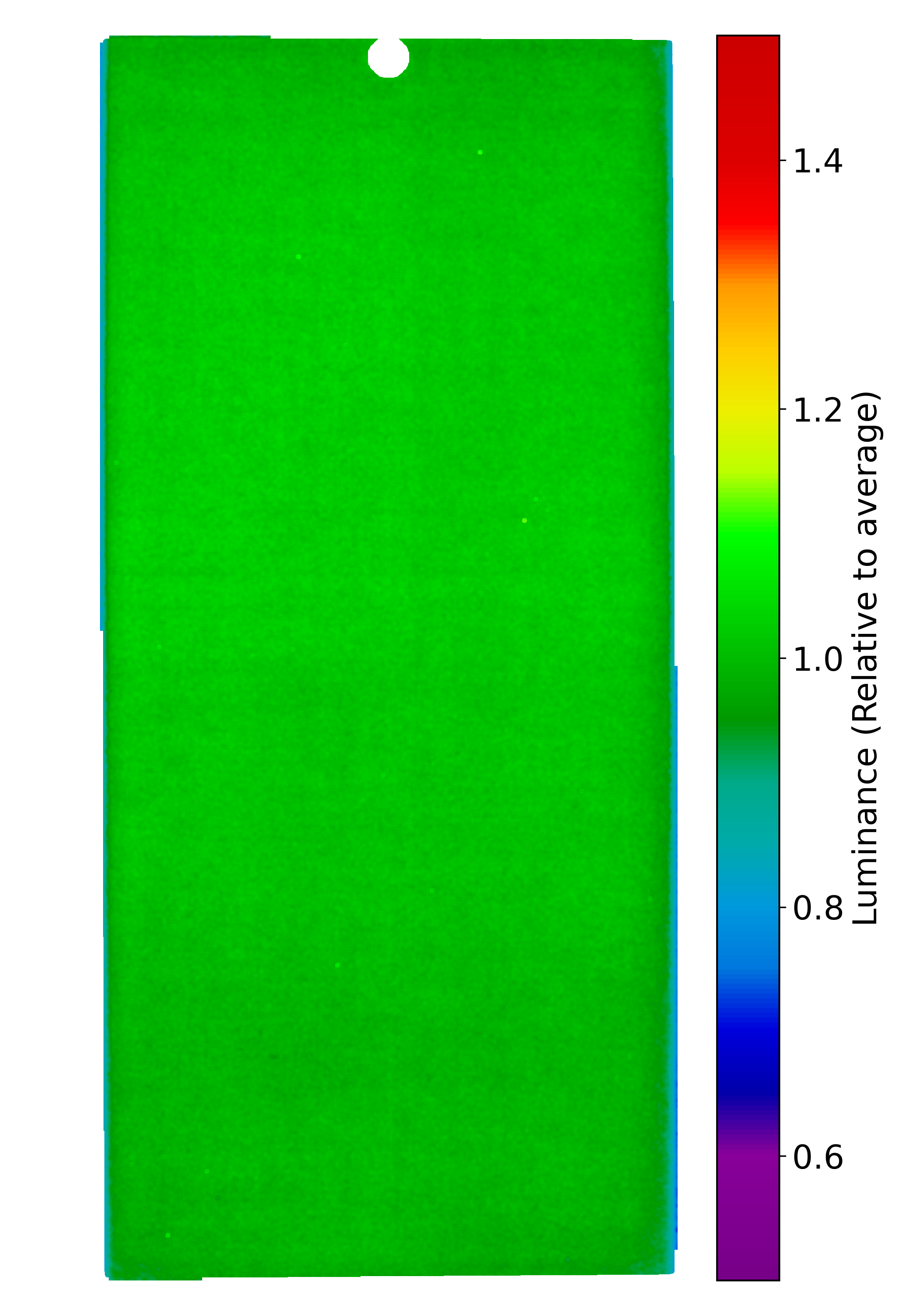
Color
Honor Magic5 Pro
165
The color attribute evaluates the capacity of the device to accurately reproduce colors. The measurements taken are for fidelity, white point color, and gamut coverage. We perform color evaluations for different lighting conditions to see how well the device can manage color in the surrounding environment. Colors are measured using a spectrophotometer in a controlled lighting environment. Perceptual analysis of color rendering is against the reference pattern displayed on a calibrated professional monitor.
The Honor Magic5 Pro’s color rendering was mostly natural and faithful, whether under objective or perceptual evaluation, but it was still somewhat behind the Huawei Mate 50 Pro, which holds the top score in color. However, the Magic5 Pro did outperform the iPhone 14 Pro Max and the S23 Ultra in this attribute.
The Honor Magic5 Pro had good color accuracy in indoor and low-light conditions, with a particularly natural rendering of skin tones. In outdoor conditions, the device’s HBM altered the colors a bit, especially on skin tones, but the color remained good on other content, especially when compared with the Samsung S23 Ultra, whose colors were often saturated.
The Honor and Samsung devices have a white point close to 7000K (analogous to bright cloudy skies), while the iPhone is closer to warmer D65 lighting (bright sunny skies) under 1000 lux conditions.
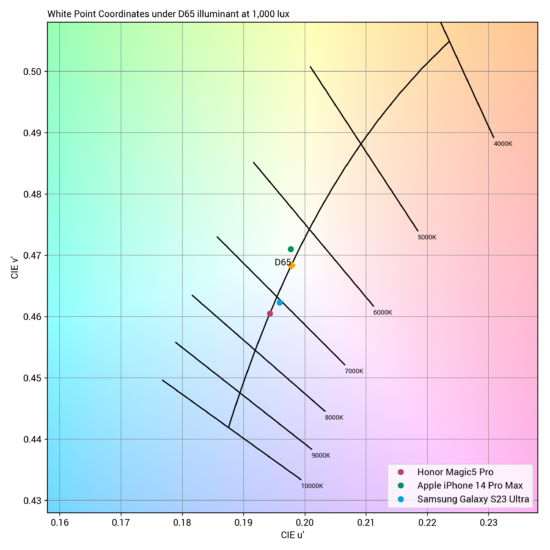
The illustrations below compare screens that were in lighting conditions equivalent to a home environment (250 lux). The Magic5 Pro’s (as well as the S23 Ultra’s) neutral skin-tone rendering becomes evident when shown next to the iPhone’s illustration, which shows an orange cast. The graph just below the illustrations are the screen measurements related to the faithfulness of skin tones. The Samsung and Honor arrows remained well-centered and within the circular boundaries, indicating the degree of their faithful and natural skin-tone rendering.


Under sunlight, the Honor Magic5 Pro provides faithful color rendering, while the iPhone 14 Pro Max presented a yellow cast. The S23 Ultra occasionally presented artifacts on colorful content, with saturation obliterating fine details.


The Honor Magic5 Pro is saturated in blue colors but favors a natural rendering for skin tones (as shown in the orange to pink color regions).


The Honor Magic5 Pro took on a green cast when viewed on angle (45°), which can detract from good skin-tone rendering. However, at 30°, the Honor Magic5 Pro kept the color shift limited to the interior of the bigger circle, while the Samsung S23 Ultra crossed the bigger circle’s boundaries at around 20.
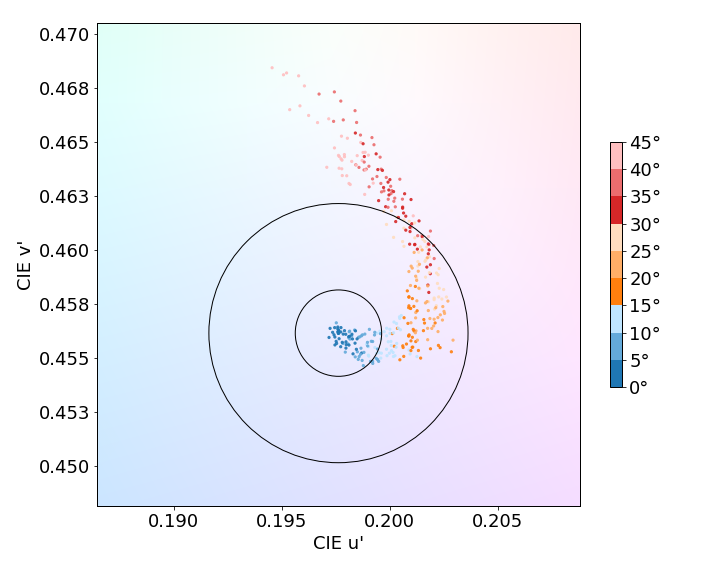
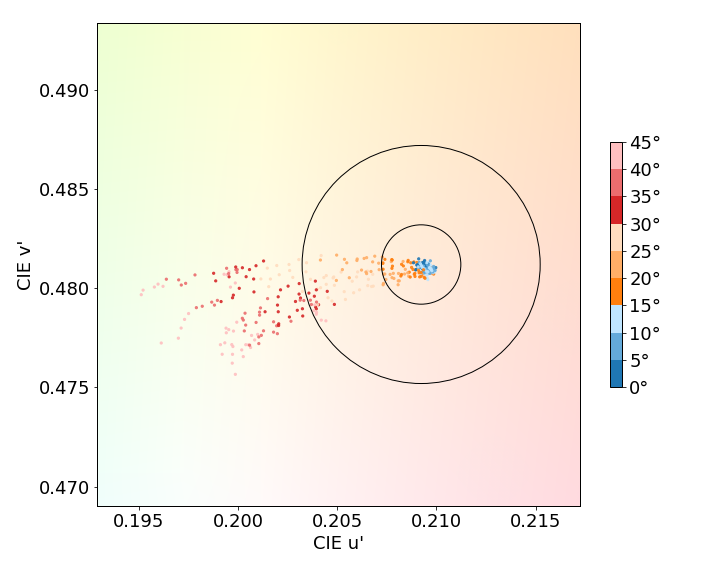
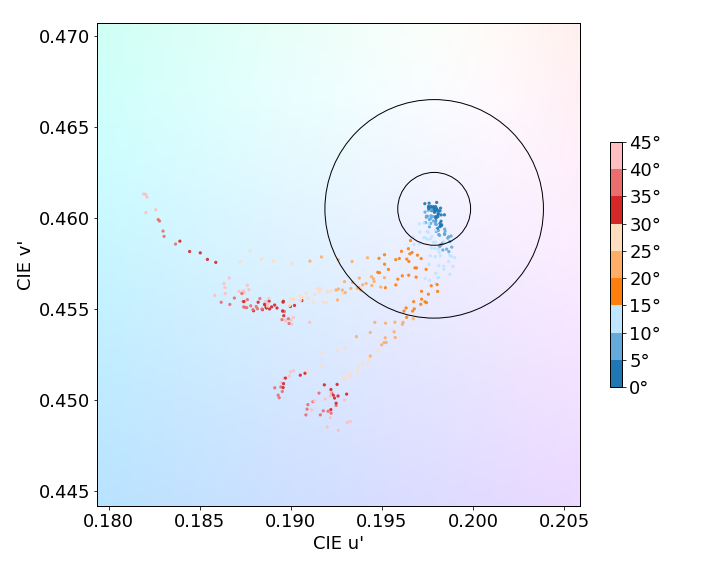
Video
Honor Magic5 Pro
167
Our video attribute evaluates the Standard Dynamic Range (SDR) and High Dynamic Range (HDR10) video handling of each device in indoor and low-light conditions. We measure tone mapping, color gamut, brightness and contrast of the display. We perform perceptual analysis against our professional reference monitor (Sony BVM-HX310) to ensure that the rendering respects the artistic intent.
Brightness and contrast were good when watching HDR10 videos on the Magic5 Pro. Although the Honor device’s HDR10 video rendering was close to that of the Samsung, one drawback for the Honor was that a visible green cast could impact the color rendering.
As shown in the picture below, HDR rendering was close to the Samsung Galaxy S23 Ultra.

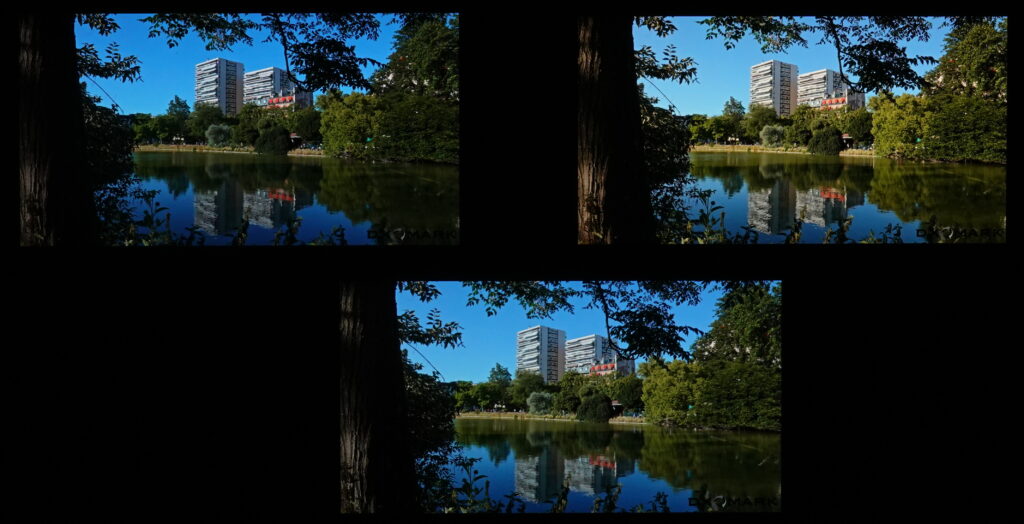
The Magic5 Pro adapted its video color space to content, as shown in the graphs below.
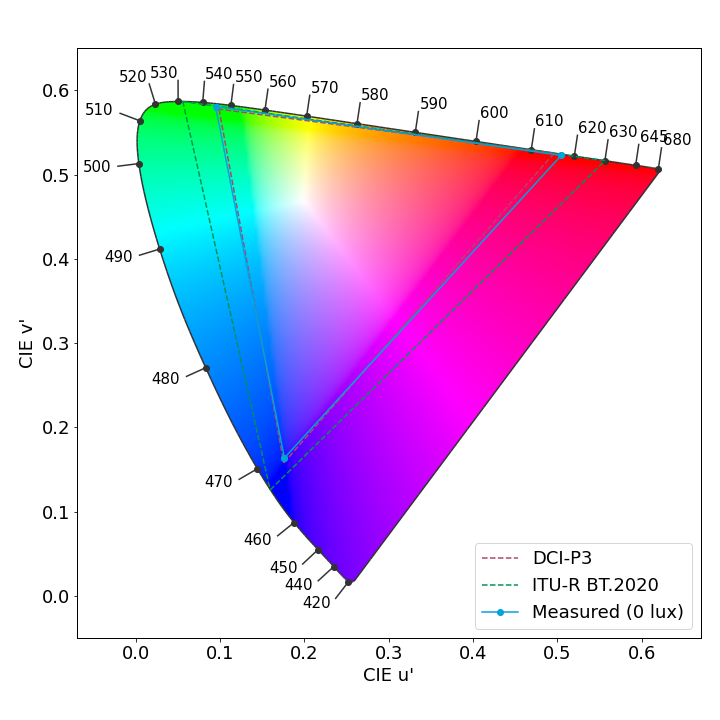
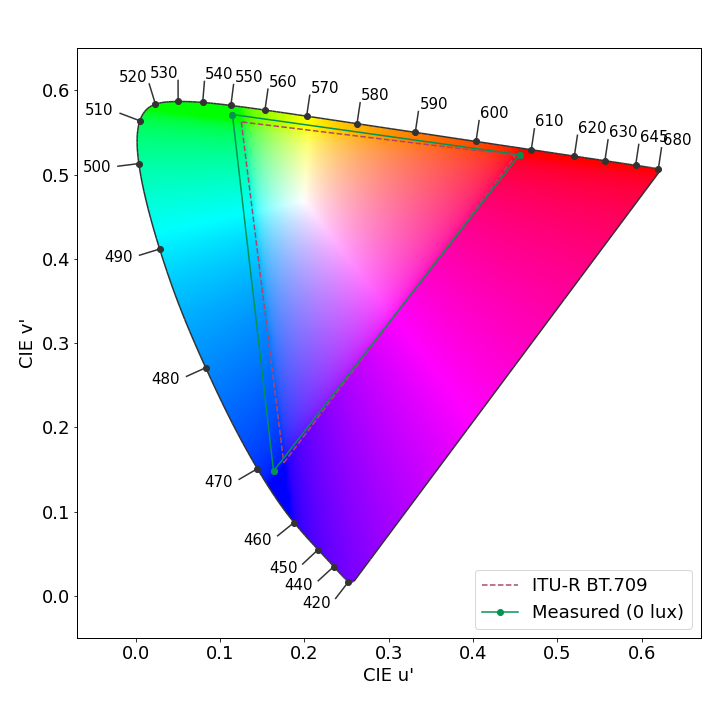
Motion
Honor Magic5 Pro
The motion attribute evaluates the handling of dynamic contents. Frame drops, motion blur, and playback artifacts are scrutinized using games and videos.
The Magic5 Pro also performed well in DXOMARK’s tests for motion control, with very smooth video playback and immediate reactivity. Despite a few more frame drops than its two competitors, the Magic5 Pro’s performance was still very good.
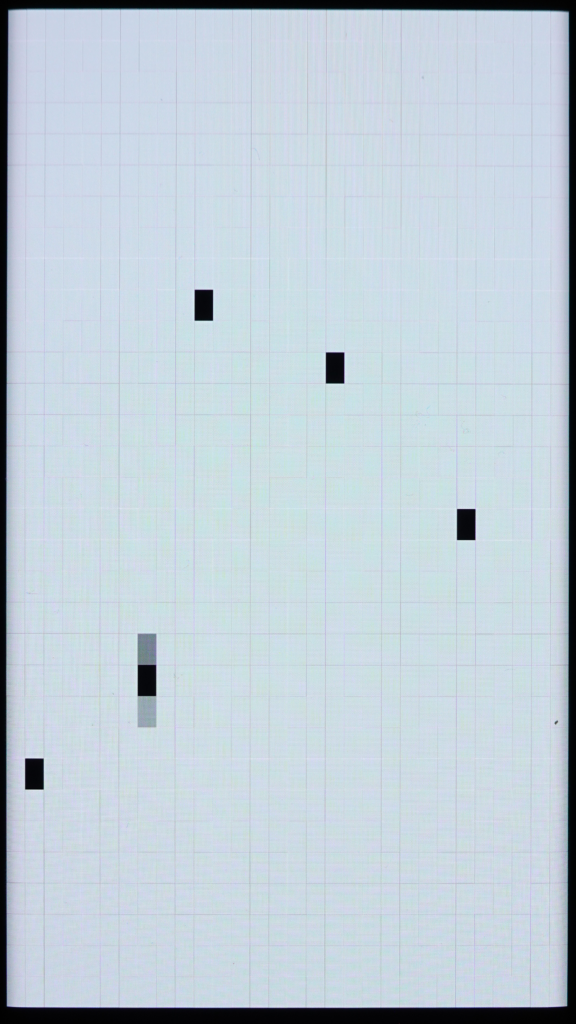



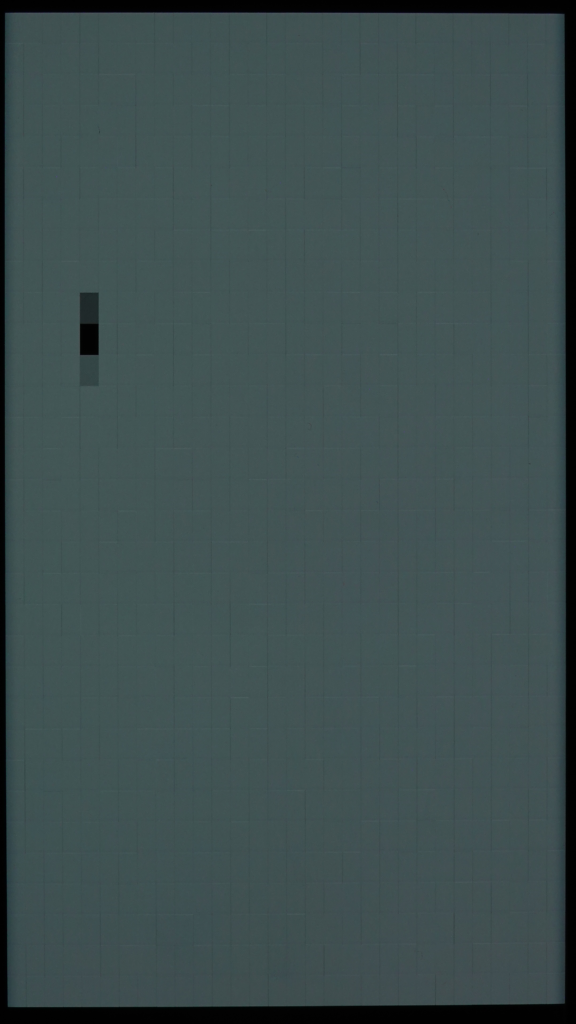

Touch
Honor Magic5 Pro
164
To evaluate touch, DXOMARK uses a touch robot and a high-speed camera to play and record a set of scenarios for smoothness, accuracy and response-time evaluation.
The Magic5 Pro is smooth in the gallery app and when browsing the web, though it is not as smooth when playing video games. Touch is accurate across the whole screen, even in the corners, and its 70 ms response time is very similar to that of its competitors.
Artifacts
Honor Magic5 Pro
Evaluating artifacts means checking for the performance, image rendering and motion flaws that can affect the end-user experience. DXOMARK measures precisely the device’s reflectance and the presence of flicker, and assesses the impact of residual aliasing when playing video games, among other characteristics.
The Magic5 Pro’s display artifacts were very well controlled. The display did not reveal any relevant flicker, and the display did not react to ghost touches during testing. The reflectance ratio of the Honor Magic5 Pro, however, was standard.
The Honor Magic5 Pro was flicker-free, which is still rare among OLED displays, making the device more comfortable to use in low light.
As the graph below shows, the Magic5 Pro’s first relevant peak occurred at 1910 Hz, whereas the iPhone 14 Pro Max’s first relevant peak was at 480 Hz and the Galaxy S23 Ultra’s was at 240 Hz. While the Magic5 Pro’s display demonstrated some peaks just before 500 Hz, those peaks never went beyond -10 dB as they did for the iPhone and the Galaxy, and were not taken into account.
The Magic5 Pro kept aliasing well under control, but it did not outperform the iPhone 14 Pro Max in this artifact.
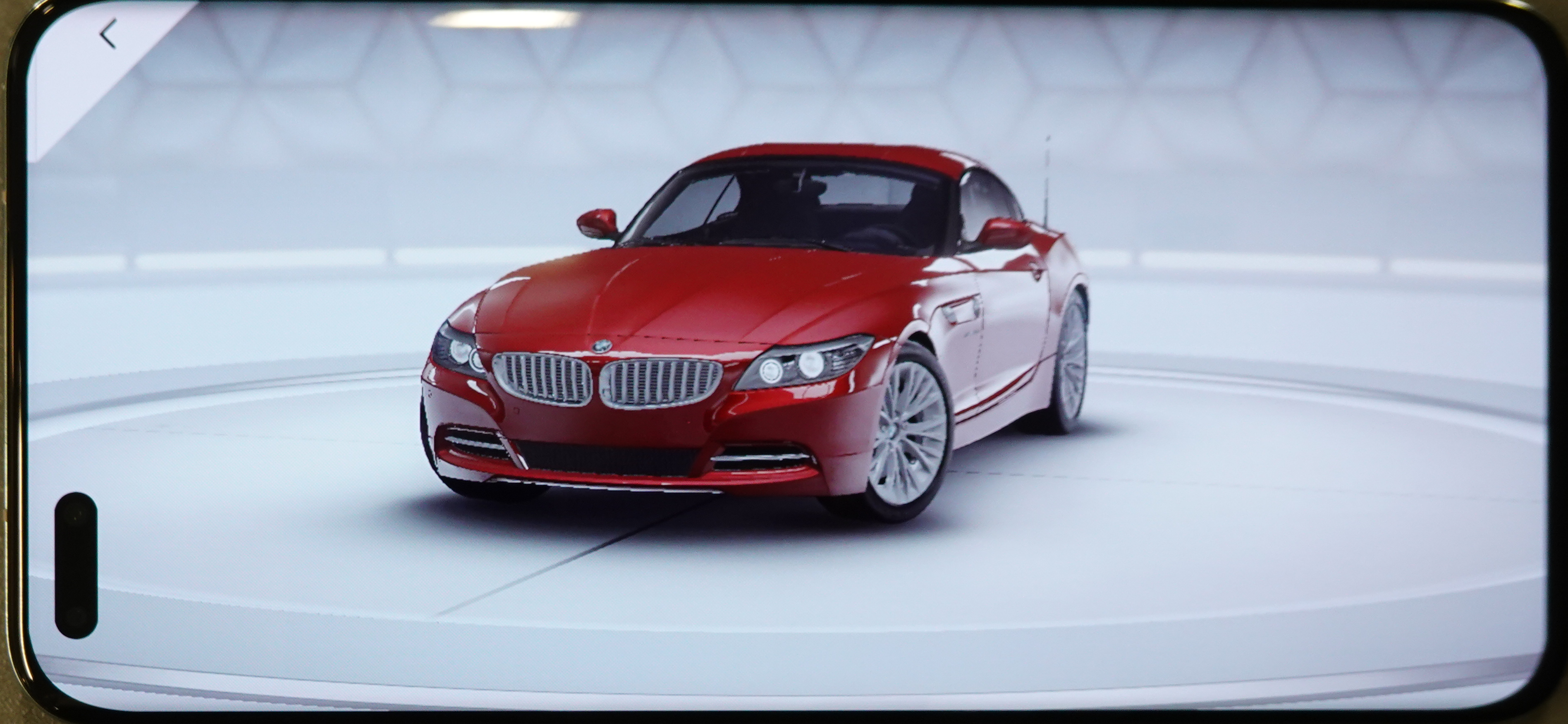





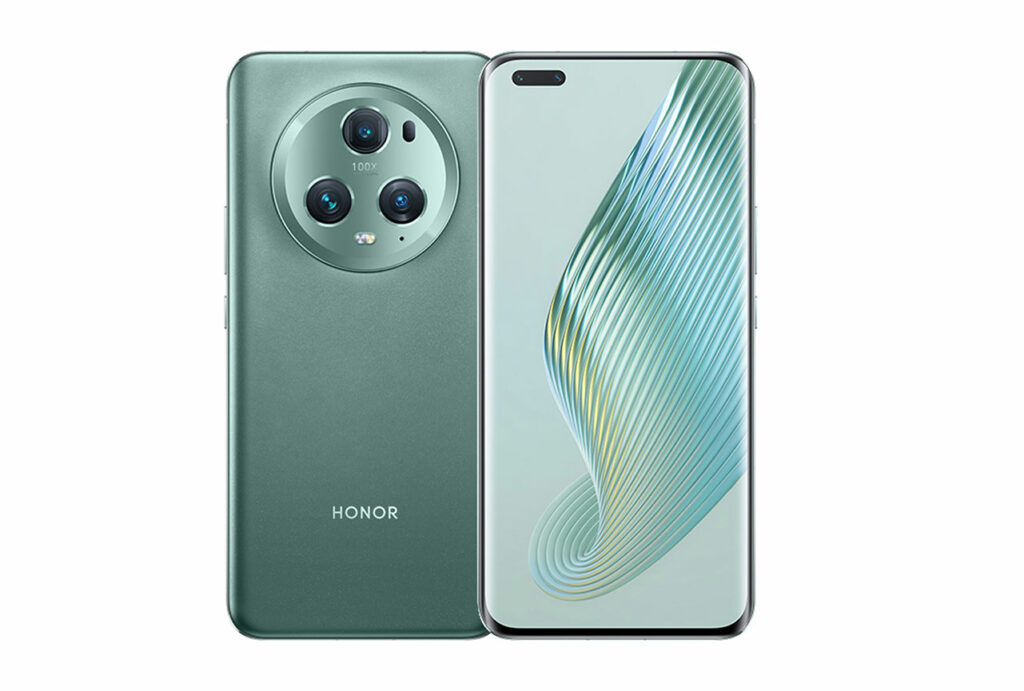

DXOMARK encourages its readers to share comments on the articles. To read or post comments, Disqus cookies are required. Change your Cookies Preferences and read more about our Comment Policy.